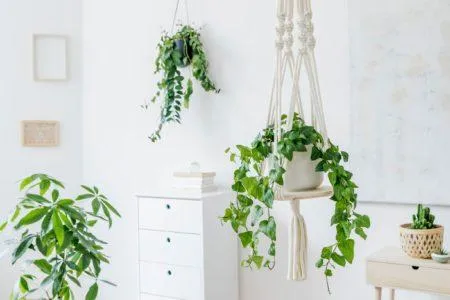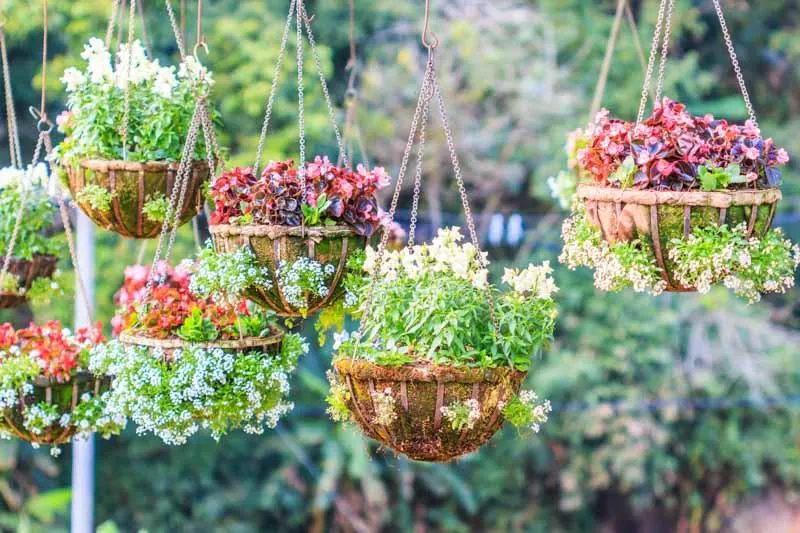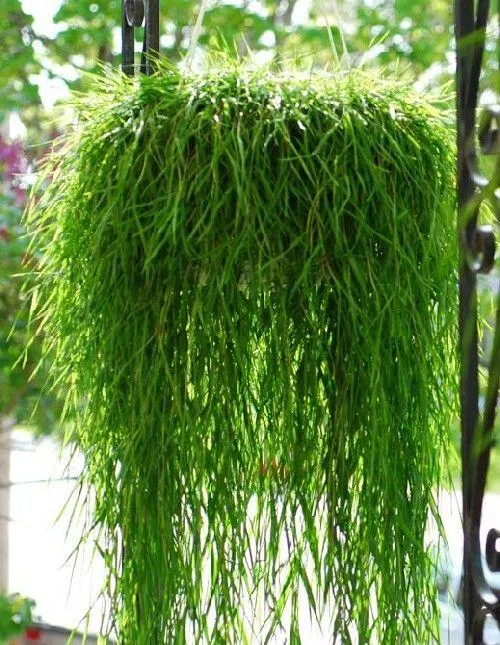Everything You Need to Know About Cascading Hanging Plants
Cascading hanging plants are a beautiful way to add greenery to any indoor or outdoor space. From ferns and ivies to vines and succulents, these flowery friends can transform a bare wall or ceiling into a leafy landscape. As someone who’s used cascading plants for years, let me walk you through the key things to know about selecting, caring for, and styling these show- stopping showstoppers.
Choosing the Right Cascading Plants
With so many options available, the first step is to consider your space and preferences. Here are some top cascading plant picks:
- English ivy: An evergreen classic that thrives in low-light. Ivy spreads quickly and is nearly indestructible.
- Pothos: A tropical beauty in gold, marble queen, and neon forms. Pothos is low maintenance and tolerates neglect.
- Swedish ivy: Similar to English ivy but more compact. Great for smaller areas.
- Spider plant: Produces tiny “spiders” on long stems. An air-purifying choice with dramatic texture.
- Wandering dude: A favorite of mine for its heart-shaped leaves and fast growth. Turns stunning shades of purple in fall.
Consider texture, color, water needs, light requirements, and growth rate to pick plants suited to your setup.

Planting and Caring for Cascading Beauties
When growing cascading plants, keep these essential care steps in mind:
- Start with healthy, pest-free cuttings or rooted plants. Check for signs of damage before purchase.
- Use the right potting mix – I like common potting soil blended with perlite or bark for drainage and aeration.
- Position your container up high, securely mounted to the wall or ceiling using heavy-duty hooks.
- Water when the top inch of soil dries. Mist regularly for humidity-loving plants like ferns.
- Give cascading plants the conditions stated on their care tags regarding light, temperature and fertilizer.
- Trim longer stems or vines as desired to shape the flow and fullness of your planters.
With regular care, your plants will thrive for years to come!
Styling Tips for Awesome Cascades
Once you’ve chosen your plants, it’s time for the fun part – getting creative with displays! Here’s what I’ve learned:

- Combine different textures, colors and sizes – pineapples with spider plants, anyone? Basically you can’t go wrong.
- Cascade down all sides of your container for maximum visual impact. Leave some stems bare for an airy look.
- Add props like sticks or moss poles for the vines to climb. This sculpts the flow into fun shapes.
- Vary heights by mounting containers on walls and ceilings. Make sure tall plants don’t block lighting for shorter ones.
- Refresh mounts throughout the year by pinching off old leaves or stems to encourage new growth.
- accessorize, accessorize! Try teaming vines with string lights, miniature figurines or air plants.
So in summary, picking plants tailored to your space, providing proper care, and getting creative with displays are key to enjoying gorgeous cascading hanging gardens for years to come. Let me know if you have any other questions!
Factors to Consider When Choosing Cascading Hanging Plants
| Plant Type | Light Needs | Watering Needs | Growth Rate |
|---|---|---|---|
| English Ivy | Partial to full shade | Allow soil to dry slightly between waterings | Vigorous vine grows 3-5 inches per year |
| Wax Begonia | Partial to full shade | Keep soil lightly moist | Moderate growth rate of 6-12 inches per year |
| Pothos | Partial shade to full sun | Allow soil to dry out slightly between waterings | Fast growing vines can reach 3 feet per year |
| Spider Plant | Bright indirect light | Allow soil to dry slightly between waterings | Moderate growth with runners and baby plants |
| Swedish Ivy | Partial shade | Keep soil moist | Vigorous climbing vines grow up to 3 feet per year |
FAQ
-
What are cascading hanging plants?
Cascading hanging plants are flowering vines or trailing plants that are grown in hanging baskets or containers suspended in the air. They allow long stems, foliage, and blooms to grow downwards due to gravity instead of growing upwards.
-
What kinds of plants are suitable for cascading?
There are numerous plant varieties that work well for cascading growth. Common options are ivy, Swedish ivy, wax begonia, coleus, lucky bamboo, creeping fig, spider plant and english ivy. These plants tend to have a flexible stem that can hold itself and grow over the edges of containers without much support.

-
How do I take care of cascading plants?
It’s pretty easy to care for these beauties. Give them partial shade and water when the top inch of soil gets dry. You can also fertilize monthly during the growing season. Another key thing is to occasionally rotate the pot or basket to encourage uniform growth patterns. With some TLC, they’ll keep on cascading!
-
What container is best for cascading?
For growing trailing plants, baskets and containers with sides help direct the plant growth downwards. Basic options are hanging baskets, rectangular planters and hanging planters with holes. Just make sure to pick a container roughly 1 to 2 sizes bigger than the plant’s original nursery pot. This gives roots space to spread out.
-
How do I get cascading plants to trail longer?
Cascading length greatly depends on the container height. Nevertheless, there are some ways to encourage extra-long trails. First, pinch off new growth tips so the plant puts energy into lengthening stems rather than bushiness. Next, use plant growth regulators or fertilizers designed to stimulate elongation. Lastly, hang the pot a bit higher so ceilings or overhead obstacles aren’t limiting the trails.

-
Are cascading plants only for outdoors?
While they thrive best outdoors enjoying nature’s elements, cascading plants can also be used indoors if you get the conditions right. Look for varieties accustomed to lower-light indoor settings. Moreover, make sure to give them bright, filtered sunlight by windows. With regular watering and the occasional plant food, viney indoor trails are totally feasible! Just be ready to prune back growth as needed.
-
What are the benefits of cascading plants?
Cascading varieties offer pizzazz and visual appeal above other plant types. Their trademark lush, hanging trails create unique texture and flow. Moreover, these beauties work well for large spaces that call for plant drama without taking up precious garden real estate. They also help isolate awkward vertical areas into luscious green zones. Lastly, their screening properties offer shade, mini windbreaks and lovely ambiance to patios, porches or indoors. So cascade away – the perks are abundant!
